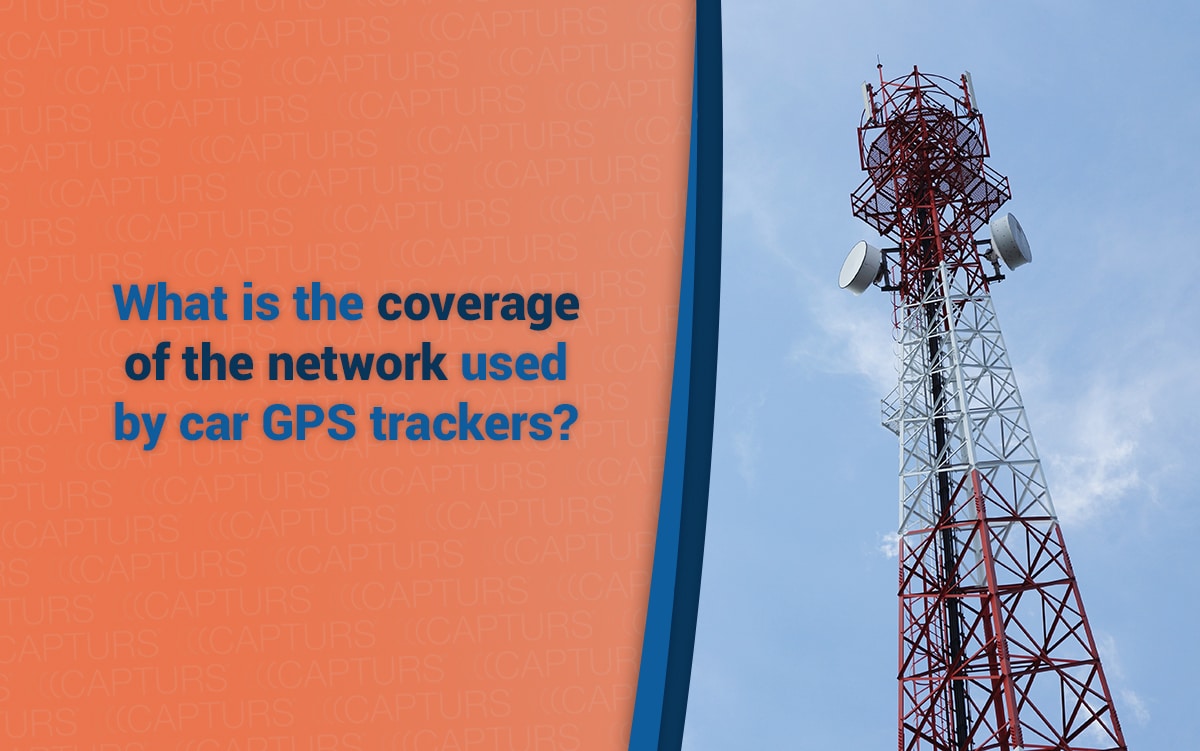What is the coverage of the network used by car GPS trackers?

GPS tracking for cars and vehicle fleets offers a multitude of benefits, from security to operational efficiency. However, the performance of these systems depends largely on the network used by the GPS trackers.
Good and reliable network coverage is essential for car GPS trackers. These devices work by sending location information via communications technology. Strong and reliable network coverage therefore ensures precise and real-time data transmission, allowing an accurate and constant frequency of sending vehicle positions by the device.
On the other hand, insufficient network coverage can cause delays in data transmission or even loss of information, making vehicle tracking inaccurate and ineffective. Therefore, to ensure the optimal functioning of car GPS trackers, robust and reliable network coverage is essential.
In this article, we will explore in detail the network coverage used by car GPS trackers and its impact on vehicle fleet tracking.
Understanding how GPS trackers work
A GPS car tracker is a device that uses the GPS system to determine the precise location of a vehicle. It typically consists of a GPS receiver and a transmitter that sends location data to a server or connected device, such as a smartphone or tablet.

There are different types of GPS trackers, each with their own features and benefits. Some are designed to be permanently installed in a vehicle, while others are portable and can be easily moved from one vehicle to another. Some GPS trackers offer additional features, like real-time monitoring, alerts, non-jamming, and route reporting.
The network used by GPS trackers
Presentation of the different networks used (GSM, 3G, 4G, 5G, LoRa, Sigfox, etc.)
Car GPS trackers use different types of networks for location data. The most commonly used are GSM networks (2G, 3G, 4G, 5G), but other technologies such as LoRa or Sigfox can also be used (see our attached article to find out more about the technologies used by GPS trackers).
Advantages and disadvantages of each network
Each network has its own advantages and disadvantages. For example, GSM networks provide wide coverage and enable fast data transmission, which is ideal for real-time tracking. However, they can consume a lot of power and require a SIM card to work.
On the other hand, LPWAN technologies like LoRa and Sigfox are designed for the Internet of Things (IoT) and are therefore more energy efficient. They may also provide wider coverage in rural or remote areas, but data transmission speeds may be slower.

Network coverage: importance and impact on GPS tracking
Network coverage is a crucial aspect of GPS tracking. Good coverage ensures that location data can be transmitted reliably and accurately, which is particularly important for tracking vehicle fleets. Poor coverage can cause delays or errors in location data, which can affect tracking effectiveness.
Check your network coverage
The effectiveness of fleet tracking largely depends on the network coverage used by GPS trackers. Good network coverage ensures that location data is transmitted in real-time and accurately, which is essential for effective fleet tracking. Conversely, poor network coverage can lead to delays in data transmission or inaccurate location data, which can undermine tracking effectiveness.

Before purchasing the best GPS tracker adapted to the needs of your vehicle fleet, it is important to check a few criteria, such as the battery life or the associated settings.
It is also essential to check that the GPS tracker will work in the region where you operate. This means that the GPS tracker must be able to send location data.
GSM network
Check GSM network coverage directly on the Arcep.fr website. However, pay close attention to two things.
Check whether your GPS tracker is multi-operator or not so that you can check the right boxes (Bouygues, Free, Orange and/or SFR).
Check if your GPS tracker is 2G, 3G, 4G, 5G only or if it is 2G/3G/4G both. Note also that 2G and 3G networks are destined to disappear in the coming years in France.
LPWAN Networks
Check LPWAN network coverage directly on associated sites.
- Sigfox: View the coverage globally or via a postal address.
- LoRa: Watch the coverage directly on the orange-business.com website.
